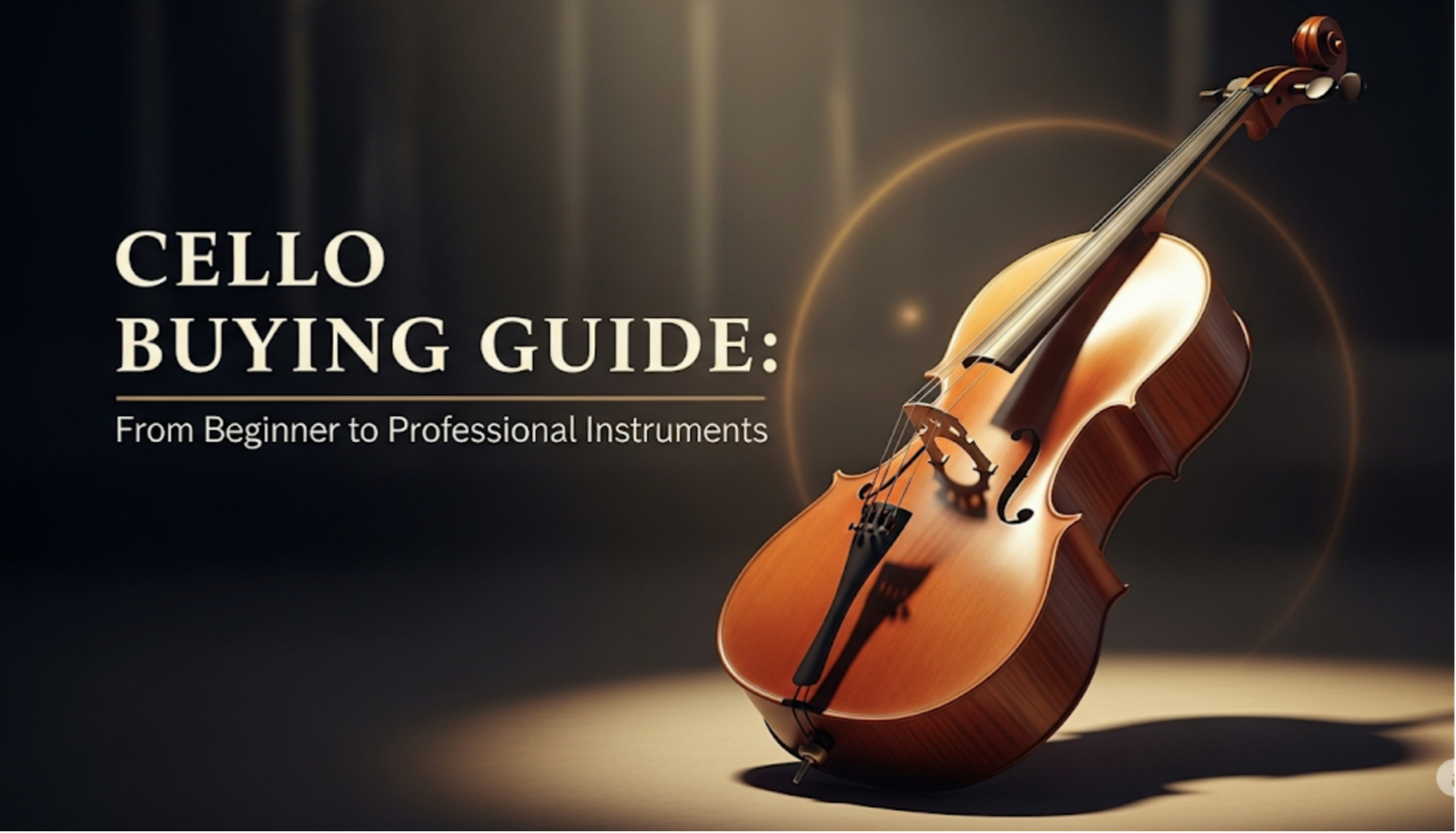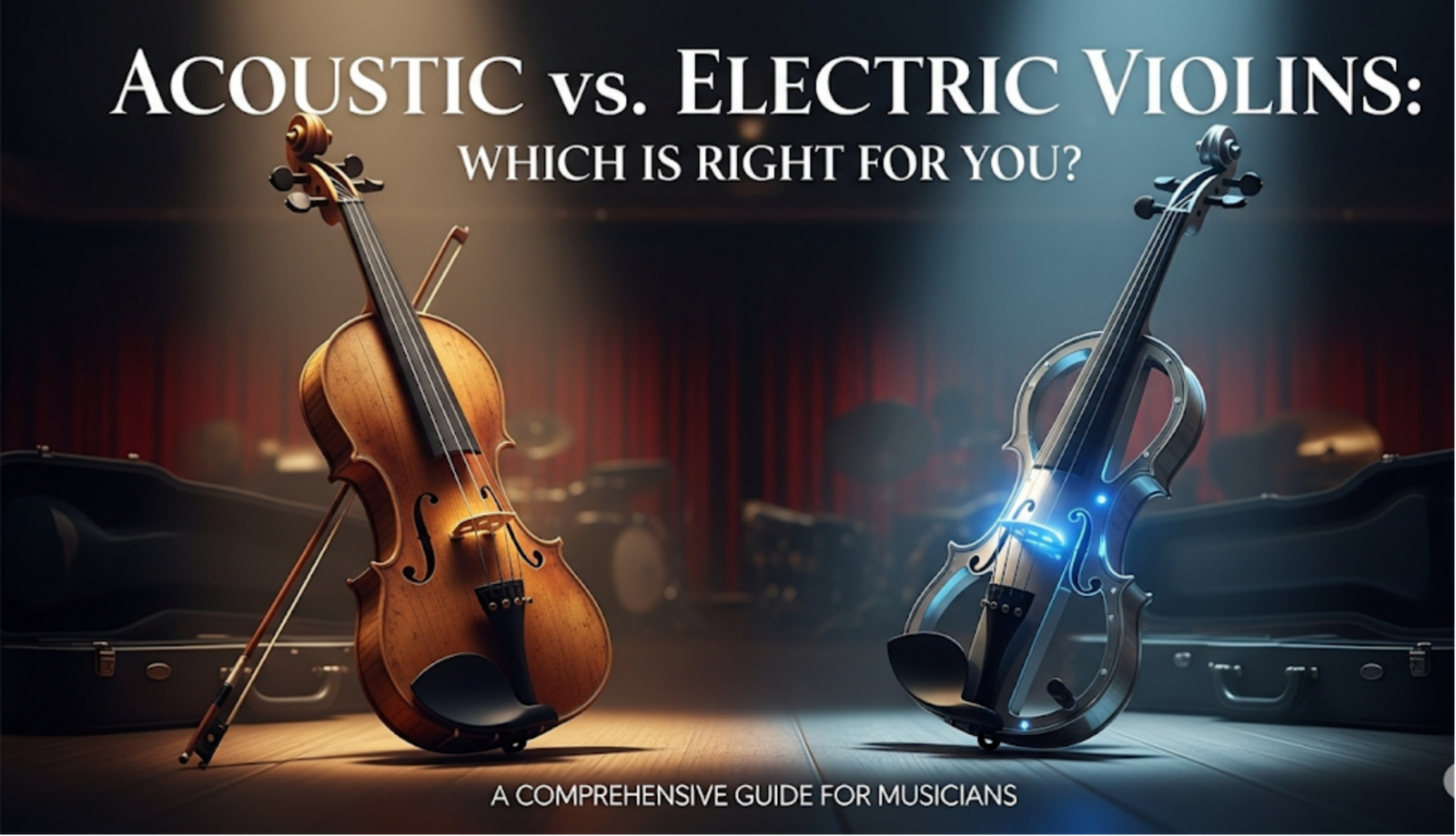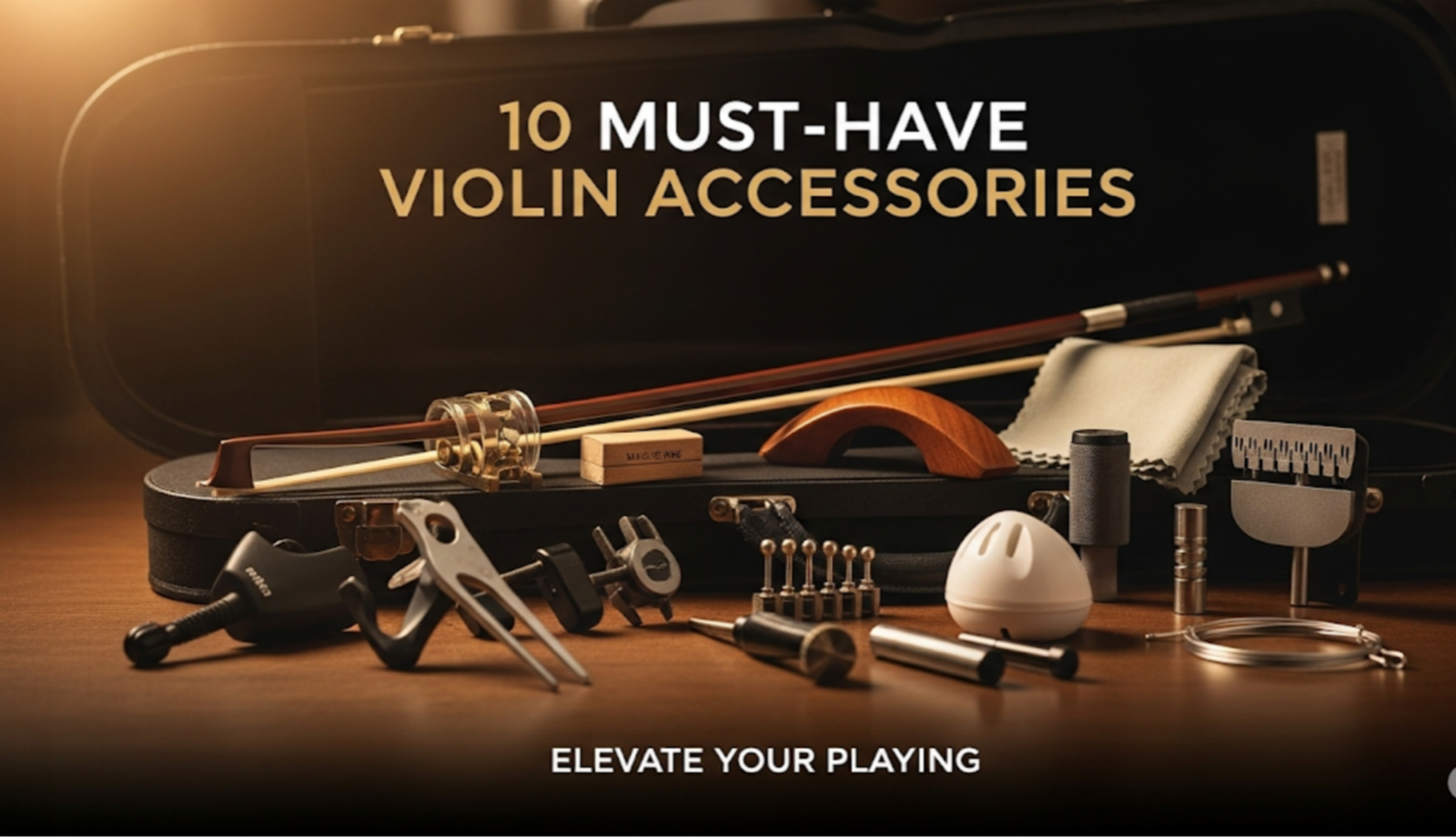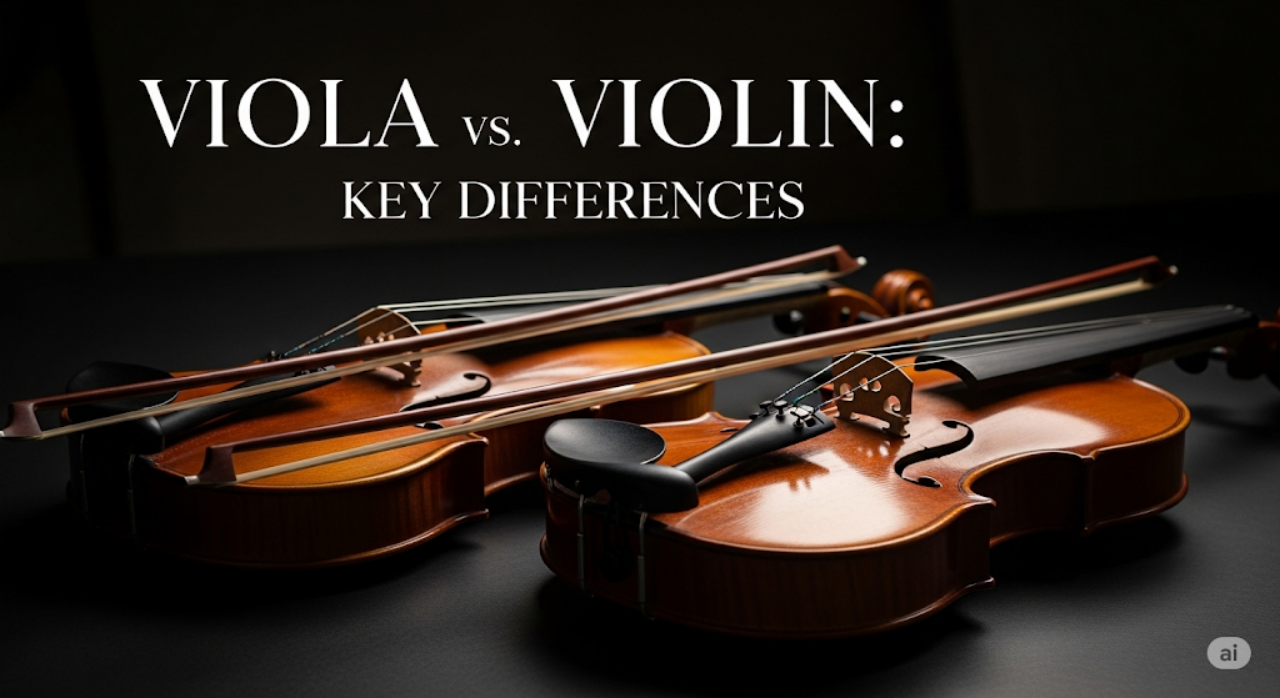Whether you are just beginning lessons or seeking your first upgrade, buying a cello can often feel more complicated than it ought to be. The cost changes a lot, the size is confusing, and everybody claims to be the best. The most important thing is for you to be able to find an instrument that suits your skill level.
Whether you are a parent who is choosing the best cello for beginners, you want it to be durable, easy to maintain and sized properly. As you move toward professional work, you probably compare tone woods, brand names, and performance. Whether you want to buy a cello to learn or to upgrade your cello, this guide is helpful.
You will learn how to choose a cello size, what the differences between student instrument and advanced ones are, and what professional cello brands always perform.

Cello Sizes: How to Choose a Cello Size
Learning how to choose a cello size is key for both beginners and advancing players.
Measuring for the Right Fit
First, sizing starts with the player’s seated reach. When holding the cello, the scroll should align with the player’s ear, and the knees should gently support the lower body of the instrument. The left arm should comfortably bend to reach the fingerboard. These physical checks help confirm the correct cello size, which prevents tension and supports long-term playing comfort.
Age and Size Guidelines
Next, general rules connect age and height to standard sizes. Children under 10 often use 1/4 to 1/2 size cellos. Teens and most adults usually play 4/4 full-size instruments. However, charts are only starting points. The final choice depends on body shape, reach, and feel during practice. Accurate selection helps avoid frustration and injury, especially in early lessons.
Mistakes to Avoid When Sizing
Meanwhile, avoid choosing a cello that’s too large. Playing a big instrument before you’re ready can cause arm strain and poor hand position. Also, don’t guess based on height alone. Always try instruments when possible, or consult a qualified teacher to help decide the best cello size.
Best Cello for Beginners
Once you know how to choose the right size for cellos, the next step is how to choose the best cello for beginners – one that supports early progress rather than hinders it. A good student instrument should stay in tune and respond readily to the bow with a stable and well-balanced tone. Even if you practice solidly, a bad setup will frustrate you.
What Makes a Cello Beginner-Friendly.
A beginner cello should make a sound that is easy and require minimal pressure. When students hear what they are doing correctly, it builds their confidence. The fingerboard must be smooth and flat, and the strings need to be at a suitable height. Young players will struggle no matter how well they follow instructions if the bridge is too high or the fingerboard isn’t shaped correctly.
You’ll find that all Ariose beginner cellos are pre-set with proper bridge height, solid tuning pegs, and quality strings. To guarantee dependable intonation and smooth playability, these models are hand-adjusted- something all beginners need from Day 1!
Choosing a Starter Outfit.
Most students start with a full cello outfit that includes the instrument, a bow and a padded case. Every part must be correctly installed and adjusted. If a tailpiece is fitted too close to the bridge or a bridge is warped, it can cause tuning problems and hinder bow control. Ariose’s starter sets come complete and ready for the classroom, so the players can focus on play, not maintenance.
Buying vs Renting.
If you are unsure about committing, renting something is a safe option. Parents are able to test the interest rather than making any purchases. It helps younger players to grow. But, if you are a dedicated student or missed out on the earlier start, it is always better for you in the longer run to buy it. Ariose offers both entry-level cellos for purchase and helpful support for setup questions.
Whichever route you take, ensure that the cello arrives fully adjusted, free from warp and ready to play. Finding a beginner cello is less about the price point and more about fit, finish, and function.
Intermediate and Professional Cellos
Once a player moves past beginner level, instrument quality becomes more important. Tone, projection, and responsiveness improve dramatically in well-made instruments. Knowing what to expect from professional cello brands and advanced instruments helps avoid costly mistakes.
Moving Beyond Beginner Cellos
First, intermediate cellos use better tone woods and craftsmanship. They respond more accurately to subtle bow pressure and offer greater dynamic range. As technique improves, these features help players develop musical expression. The step-up also reduces the physical effort required to produce full tone.
What Defines a Professional Instrument
Next, professional cellos are hand-crafted with careful wood selection and detailed setup. The sound is more resonant, complex, and balanced across all strings. These instruments hold tuning longer and support advanced techniques. While not necessary for early stages, professionals depend on this consistency for rehearsals and performances.
Choosing When to Upgrade
Meanwhile, the decision to upgrade comes when the current cello limits progress. If tone quality flattens despite solid technique, or projection is weak in ensemble playing, it may be time to switch. Students should consult a trusted teacher or technician before buying, especially when considering professional cello brands.
Professional Cello Brands
After deciding to upgrade, the next challenge is knowing which professional cello brands are worth exploring. Each brand has its own tonal characteristics, build style, and materials. Understanding what to look for helps narrow the field.
Characteristics of a Trusted Brand
First, top-level cello makers focus on tonal richness, stability, and long-term reliability. The wood is aged properly, often over years, to ensure sound quality doesn’t shift with the seasons. Skilled setup and consistent tuning across octaves are common traits. A trusted brand ensures every cello meets high standards, even with natural variation.
How to Evaluate Craftsmanship
Next, focus on finish quality, neck alignment, and bridge fit. Check for even grain on the top and back plates. Tap gently across the body to hear clear resonance. If any note sounds muted or uneven, it could reflect poor internal shaping. With professional cello brands, small flaws are rare and usually fixed before sale.
Avoiding Overhyped Names
Meanwhile, beware of marketing that overstates value. A recognizable name doesn’t always mean better tone or fit. Try multiple instruments, even from lesser-known brands, and judge each on playability, not just reputation. True professional cello brands let their build quality speak through sound, not labels.
Essential Accessories and Setup
Beyond the cello itself, several accessories affect how well the instrument performs. For all levels of playing, proper setup and maintenance tools are essential. They protect the instrument and support sound quality.
Understanding Setup Basics
First, setup includes the bridge, strings, fingerboard height, and sound post. These must be adjusted to match the cello’s shape and string tension. Even a great cello sounds poor with a collapsed bridge or misaligned post. Always check setup before buying or renting, especially with beginner or used instruments.
Must-Have Accessories
Next, players need a bow, case, rosin, end pin stop, and cleaning cloth. Each accessory affects daily use. A bow with poor balance can limit tone. A soft case protects from scratches but not impacts. Rosin should match climate and playing style. End pin stops help avoid slipping during practice. Together, these tools make practice easier and safer.
Upgrading for Better Control
Meanwhile, advanced players may add string adjusters, tailpiece upgrades, or humidifiers. These changes improve tuning and protect the instrument in dry weather. Every change should be done by a professional to avoid damage. A properly equipped cello improves both practice and performance reliability.
Cello Care Essentials
Owning a cello means caring for it daily. All wooden instruments, including the cello, react to moisture, temperature and handling. Proper cello care protects your investment and ensures the instrument sounds its very best.
Daily Cleaning and Storage.
To start with, after each use, clean the cello strings and top. Use a soft cloth to wipe away rosin dust and sweat. Never use water or chemical cleaners. Loosen the bow before placing it in the case. To protect your cello against damage, store it in a padded (soft) case or hard (wooden) case and away from heat or cold.
Seasonal Maintenance.
After that, changes in humidity can warp the bridge or loosen seams. Use a humidifier in dry winter months. Check the bridge angle regularly to avoid leaning. Replace strings when tone becomes dull or pegs slip. Having a luthier check your instrument yearly will keep everything balanced and catch any small cracks.
Long-Term Protection.
Don’t keep the cello in the car or near the window. Sunlight exposure and sudden temperature changes can cause cracks or glue failure. The cello should always be kept upright and never placed flat on the floor. Cello care essentials can have small steps that can be most useful in preserving tone for many years.
How to Try a Cello Before Buying.
Before you make a final decision, it’s imperative you try your cello before committing. Every instrument creates a different sound feel and response. A good match can’t be found through a photo or price tag.
What to Play During Testing.
First, play slow scales, fast passages, and long tones. Notice how the cello reacts to how firmly you press the bow, and where you place your fingers. Examine switch between cords and the ease harmonics ring out. A well-set cello should speak clearly at all dynamics
Feeling the Fit.
Next, notice how the cello rests against your body. The scroll should reach your left ear without strain. No part of the fingerboard should require you to twist or shift your position. If it feels awkward or keeps slipping, try adjusting the endpin length or switching to a different size.
Judging Sound and Tone.
Meanwhile, pay attention to tone color and projection. Certain cellos produce a sound that is dark and rich. Others’ sounds are bright and direct. Choose the tone that fits your playing goals. Trust your ears more than any label or price tag. The sound changes when you play in different rooms.
Final Thoughts.
Knowing How to Choose a Cello Size, the Best Cello for Beginners and Professional Cello Brands. Hopefully, you are much clearer about the buying process now. If you’re new to violins or upgrading to a lifelong instrument, good information and patience are your most important tools.
Explore our full range of beginner cellos at Ariose and find a well-crafted, ready-to-play instrument that supports every step of your musical journey.



